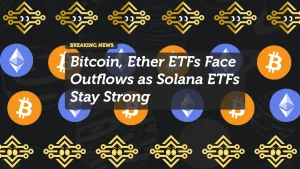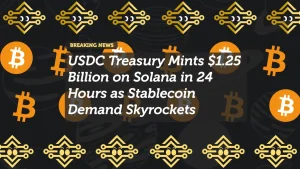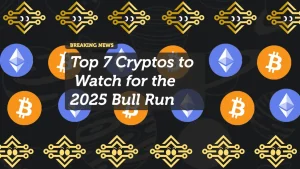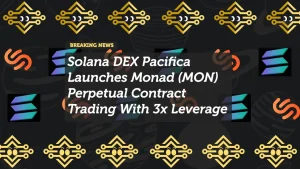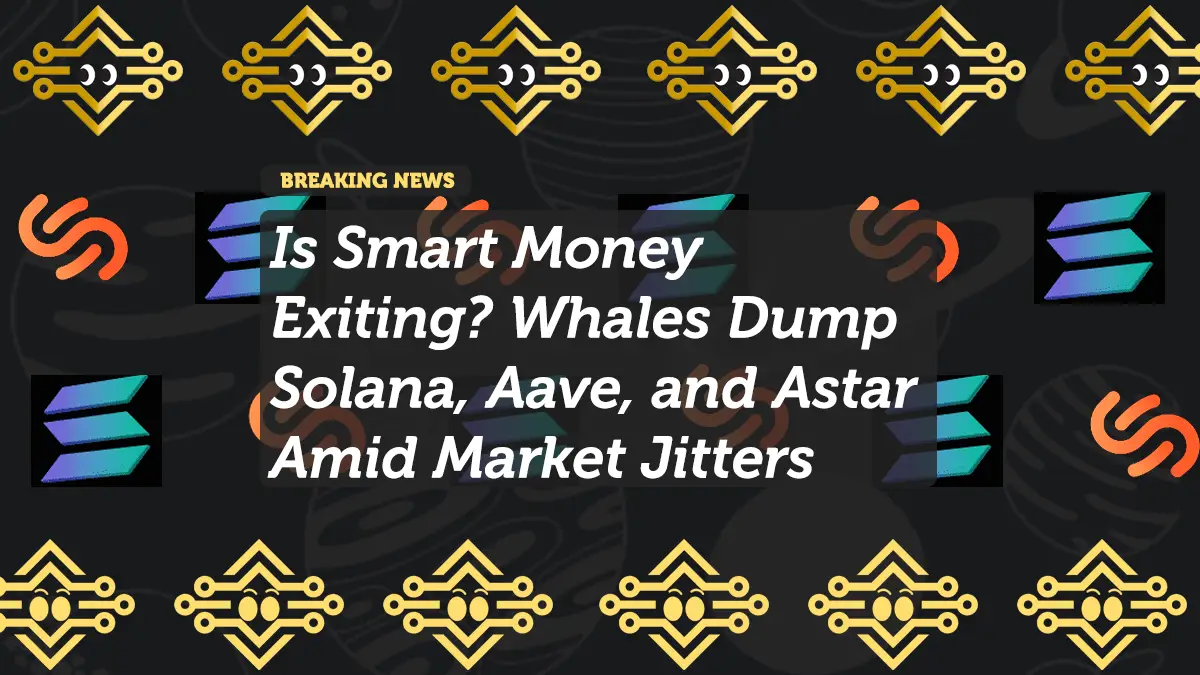
Is Smart Money Exiting? Whales Dump Solana, Aave, and Astar Amid Market Jitters
The crypto market is showing fresh signs of risk aversion as large-scale investors — often referred to as “smart money” — begin reducing exposure to major altcoins. According to on-chain data from Santiment and Lookonchain, whale wallets have been actively transferring significant holdings of Solana (SOL), Aave (AAVE), and Astar (ASTR) to exchanges in recent days, sparking concerns about a potential phase of profit-taking or capital rotation.
The move comes amid increased volatility across digital assets and a broader decline in risk sentiment following Bitcoin’s recent dip under $110,000.
Whales Move Millions in Solana (SOL)
Whale tracking data reveals that over 2.3 million SOL tokens, worth approximately $435 million, were moved to centralized exchanges in the past 72 hours. The transfers involved several long-held wallets that had remained dormant since mid-2024 — a sign that early institutional or high-net-worth investors may be taking profits.
Solana’s price has slipped 6.8% over the week, now trading near $184, after reaching as high as $198 earlier this month.
“Solana’s on-chain data shows profit-taking from older wallets, not panic selling,” explained Ali Martinez, a crypto analyst. “The network fundamentals remain strong, but some whales are clearly rotating into stablecoins or Bitcoin.”
Despite the selloff, Solana’s total stablecoin supply hit a record $15 billion last week, indicating that liquidity remains robust even as large holders trim exposure.
Aave Whales Reduce Exposure Ahead of Governance Vote
In the DeFi sector, Aave (AAVE) saw one of the sharpest shifts in whale positioning. Data from Nansen shows that multiple addresses holding between 10,000 and 40,000 AAVE tokens have sent over $76 million in assets to exchanges over the past five days.
The timing coincides with the ongoing Aave V4 governance proposal, which introduces new cross-chain liquidity management tools. While developers and community members have been optimistic about the upgrade, some institutional participants appear to be lightening up exposure ahead of the vote.
“Governance events often bring short-term volatility,” noted Sarah Dixon, Head of Research at MacroChain. “We’ve seen whales hedge positions before protocol upgrades, only to re-enter once the dust settles.”
AAVE’s price has fallen 9.3% this week, hovering around $136, with open interest in perpetual futures dropping by 12%, signaling reduced leverage exposure.
Astar (ASTR) Sees Sharp Whale Outflows
Astar (ASTR), the Polkadot-based Layer-1 network, has also experienced a wave of large outflows. Approximately 58 million ASTR, valued at nearly $12.4 million, have been sent to Binance and OKX since October 5.
These transfers came after Astar’s ecosystem expansion announcement, which included a partnership with Sony Network Communications to launch a Web3 incubation hub in Japan. Despite the fundamentally positive news, whales appear to be using the liquidity surge to exit or rebalance holdings.
ASTR’s price fell 11% in the past week, trading near $0.208, with market sentiment turning slightly bearish on social media metrics, according to LunarCrush.
Is This a Rotation or a Retreat?
While whale activity often sparks fear among retail investors, analysts caution against assuming a full-scale exit from the market. Instead, some believe the moves reflect a rotation from altcoins into Bitcoin and stablecoins as traders rebalance risk ahead of the next potential macro event — the Federal Reserve’s October policy update.
“We’re seeing capital consolidation, not capitulation,” said Charles Edwards, founder of Capriole Investments. “Whales are rebalancing into BTC dominance, but that doesn’t mean they’ve abandoned the altcoin cycle.”
Supporting that view, Bitcoin’s dominance has climbed to 55.7%, its highest level since early 2024, while exchange balances for USDT and USDC have increased by 3.4% week-over-week.
Smart Money Still Active in Select Sectors
Interestingly, despite the outflows from Solana, Aave, and Astar, whale accumulation has been spotted in other assets — particularly Ethereum staking derivatives and AI-related tokens such as Render (RNDR) and Fetch.ai (FET).
This suggests that smart money isn’t leaving crypto altogether but rather rotating toward narratives with stronger near-term catalysts, such as on-chain AI infrastructure, staking yield, and tokenized real-world assets (RWAs).
Bottom Line: A Cautious but Strategic Shift
The latest whale moves underscore a cautious environment where institutional and high-net-worth investors are locking in profits and managing exposure amid growing macro uncertainty.
Still, with liquidity stable and ETF inflows continuing, the broader crypto uptrend remains intact.
As Solana, Aave, and Astar test key technical support levels, traders should watch for potential re-entry points once on-chain selling pressure eases — especially if Bitcoin stabilizes above $110,000.
“Whales aren’t leaving the market,” Martinez added. “They’re just repositioning — and smart traders should be watching where they go next.”











